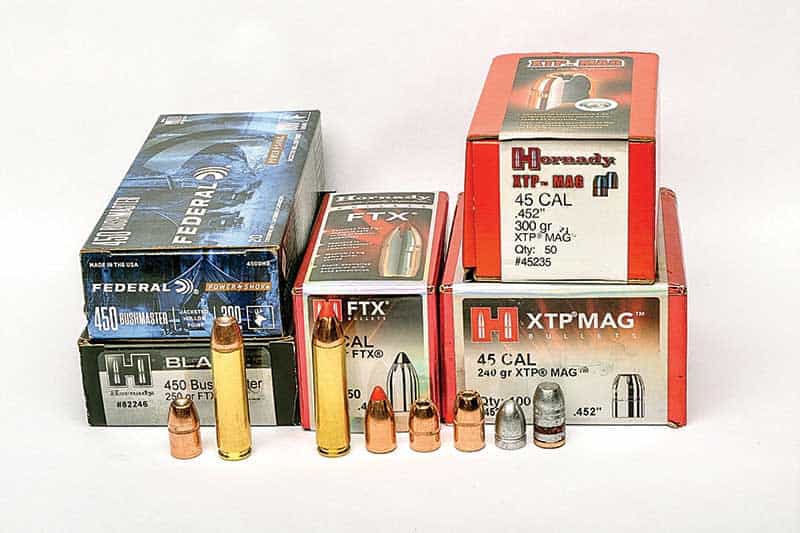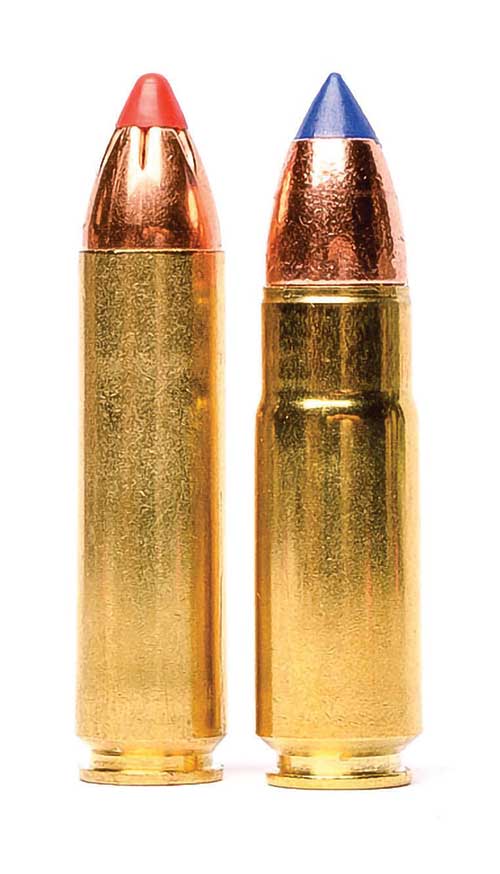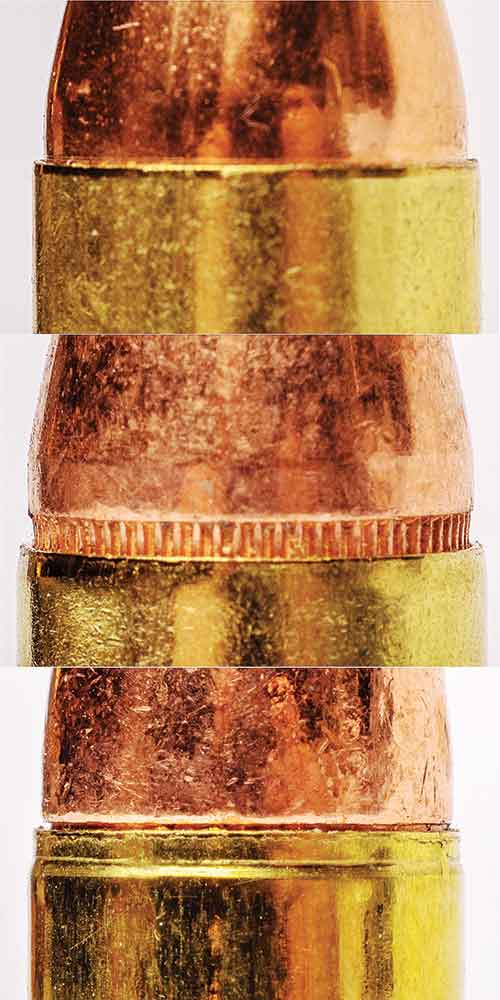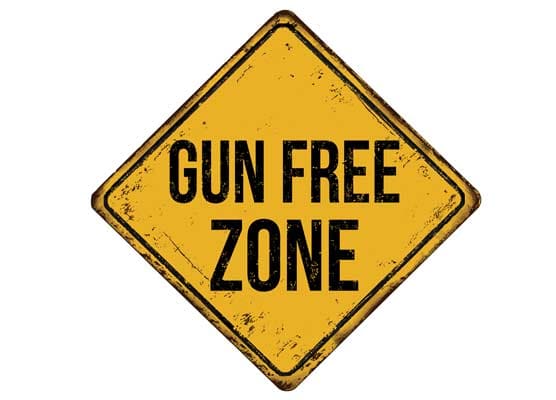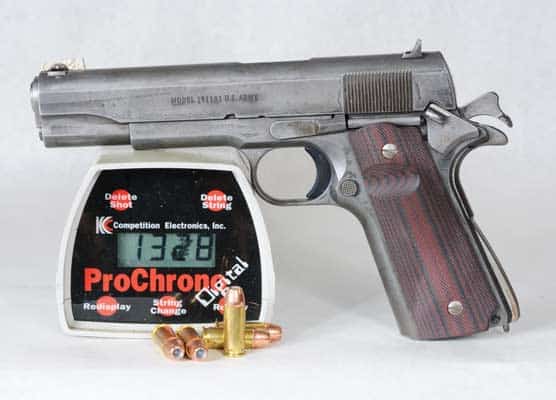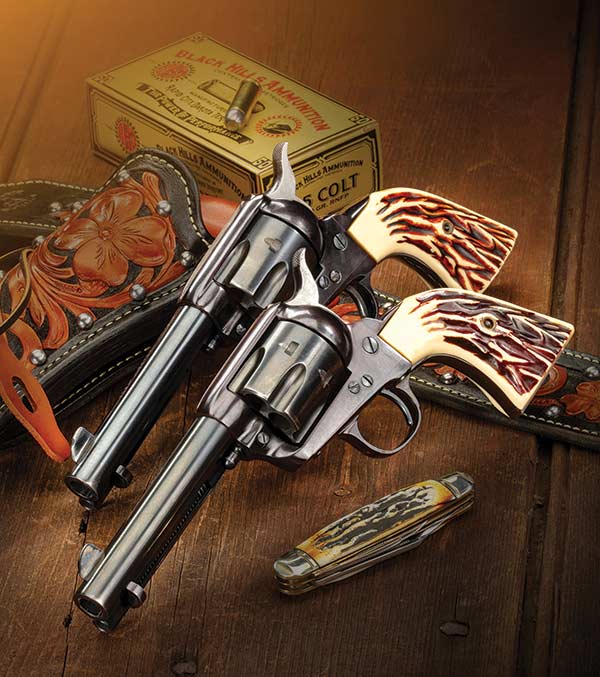.450 Bushmaster Or .458 SOCOM?
Alike but different, how do you choose?
OK, so you’ve decided you want to shoot something bigger out of your AR15 and have decided to skip the intermediate stuff and go all the way to the .45 caliber. In doing so, you’re immediately confronted with a puzzling choice — the .450 Bushmaster or the .458 SOCOM? Which one? Why are there two .45s to choose from in the first place?
In a nutshell, both rounds were developed for different purposes, and the SOCOM came first. It was developed for the Special Forces Task Force Rangers, who complained bitterly for years afterward about the inadequacy of the 5.56x45mm during the October 1993 Battle of Mogadishu against the khat-chewing locals. They wanted authoritative one-shot put down with the ability to also pulverize and penetrate short-range cover.
Building The Better Cartridge
Two requirements were stated. First, a bigger round had to be fired using a standard M16 simply by exchanging the upper, with no changes to the recoil spring, buffer, or anything else. It also had to be able to feed totally reliably from a stock USGI aluminum magazine. The Rangers wanted big heavy bullets for everyday operations plus the ability to use extra-heavy bullets at subsonic speeds fired through suppressors.
Marty ter Weeme and Tony Rumore eventually heard about their complaints. In 2000, Marty designed a fat new bottlenecked cartridge using readily available .458 bullets for the .45-70 and Tony had the first rifle ready in 2001. Properly engineered in the first place, the rifle and cartridge were a success from the first time out. They named it the .458 SOCOM in honor of the Special Operations Command warriors who needed it.
Southern Ballistic Research has been making SOCOM ammo since the very beginning, and their continuing research and development has led to an extensive line of ammunition — currently 29 different loads — for law enforcement, military use and hunting. The SOCOM round has established an impressive reputation among hog and bear hunters. What could be better than a 10-round magazine-fed semi-auto equivalent of the venerable .45-70? Today, several other companies also offer .458 SOCOM ammo.
Deer Destroyer Developed
The 450 Bushmaster started when Tim LeGendre developed the 45 Professional cartridge using common 0.452″ bullets for use in those states, allowing deer hunting with rifles using straight-walled cartridges up to 1.8″ long (generally considered pistol cartridges).
Tim licensed it to Bushmaster, who then went to Hornady to make the ammo. LeGendre and Bushmaster agreed to let Hornady shorten the case to enable them to use their 250-gr. SST bullet and the .450 Bushmaster was born. It was SAAMI approved in 2008.
Feed The Beasts
Nowadays Hornady offers 450 Bushmaster ammo with the 250-gr. polymer Flex Tip expanding (FTX) bullet, Winchester has a 250-gr. Extreme Point polymer-tipped bullet, Remington has their 260-gr. AccuTip polymer-tipped bullet and Federal offers a 300-gr. JHP. There are other brands on the market, too, but excluding exotics like the lightweight ARX-style “drill bit” bullets, factory 450 Bushmaster ammo falls into the 250- to 300-gr. range.
The rounds are similar in velocity. The 450 Bushmaster 250-gr. FTX round has a published muzzle velocity of 2200 fps, while the SOCOM round is loaded with the Barnes 250-gr. TSX HP bullet is listed at 1990 fps. However, the standard barrel length for the 450 is 20″ with a 1:24″ twist, while the .458 SOCOM standard is a 16″ barrel with a 1:14″ twist. The 4″ difference between the two accounts for about 100 fps of the velocity difference. Reverse the barrel lengths and the difference would disappear. The 450 does get a bit of a boost from being loaded to a slightly higher chamber pressure than customary for the 458 (there is no SAAMI standard for the .458 SOCOM).
What about ammo prices? Nope, not even close. A box of Hornady 250-gr. FTX for the 450 is only $31.99, or $1.60 per round from Midway USA. A box of 20 SOCOM 250-gr. TSX runs $54.99, or $2.75 each, and 300-gr. loads run around $60 ($3 per round) — and it just goes up from there.
And I thought shooting my .45-70 was expensive. Holy Schmoly, Batman! So, come feeding time, the Bushmaster seems to have it all over the SOCOM.
But wait. We haven’t talked about magazines yet. Remember, the 458 SOCOM was required to feed faithfully from standard mil-spec mags — and it does! The 30-round .223 magazines hold ten 458 SOCOM cartridges, the 20-round USGI mags hold seven, while the 10-round mags hold five. The SOCOM’s reputation with 30-round .223/5.56 polymer Hexmags seems to be flawless. Those wonderful PMAGs? Nope. The center rib down the inside front prevents them from being usable with the 450 and 458. Lancer mags are fine when modified for the 458 by Wilson Combat or Tromix.
On the other hand, the only magazine Bushmaster offers for the 450 is a short five-rounder. Why? Because it doesn’t feed worth a darn in larger magazines. Several magazine makers have tried making or modifying 7- and 10-round mags and failed. As mentioned, the .450 Bushmaster case is a tapered but straight-walled case, while the .458 SOCOM is a shorter, fatter bottlenecked case.
Therein lies the rub — standard .223 magazines can barely contain five of the skinnier .450 Bushmaster rounds. The cartridges do their best to double stack and also frequently force the magazine feed lips wider, eventually ruining the mag and allowing the cartridges to self-eject.
The sole company still offering a 10-rounder for the 450 is Tromix Lead Delivery Systems. It’s a highly modified Tapco Intrufuse magazine, costs $50, and is limited to one per customer when available
“If you decide to go with the .458, you’ll need plenty of bucks for ammo or learn to reload.”
Reload
Come reloading time, the 450 Bushmaster can use common jacketed 0.452″ bullets intended for the 45 Colt, the 454 Casull and the 460 S&W, but usable bullet weights top out at 325 grains. Not surprisingly, Lyman also lists two cast bullet loads using their 225-gr. bullet designed for the .45 ACP, and a 325-gr. flat nose revolver bullet.
The .458 SOCOM is just getting started with 300-gr. bullets. There’s no dearth of .458 bullets up to 500 grains for reloading thanks to the 458’s faster twist rate, but hard-copy data is a bit skimpy. The only manual I’m aware of with SOCOM information is the Lyman 50th Edition. Western Powders’ Handloading Guide Edition 7.0, available online, offers a lot of information for both the 450 and the 458. Barnes and Nosler also offer limited reloading information online for their bullets, while Lee Precision offers data for their reloading die sets. Southern Ballistics Research offers its own SOCOM-named powder and data for 300-gr. bullets
End Users
If you need to live with your state’s hunting cartridge restrictions, it’s the 450 Bushmaster. It’s a great flat-shooting, hard-hitting cartridge with far more power than needed for deer. Its reputation on larger game is impressive.
If you want the .45 with the most versatility, it’s the .458 SOCOM. If you decide to go with the 458, you’ll need plenty of bucks for ammo or learn to reload. With savings of more than two dollars per round, it doesn’t take long to pay for a basic reloading setup.

